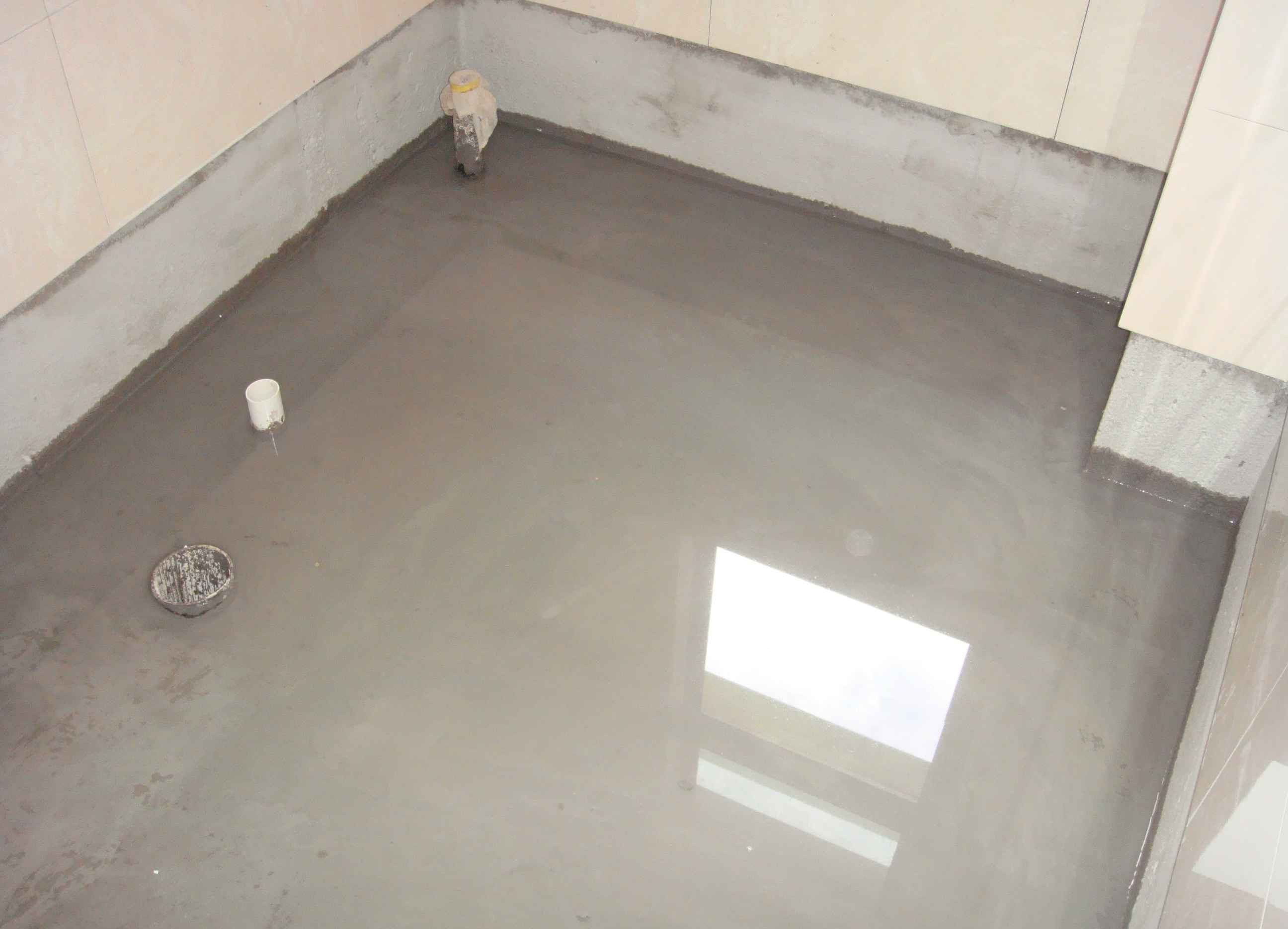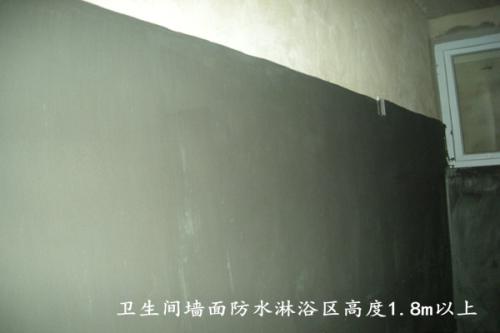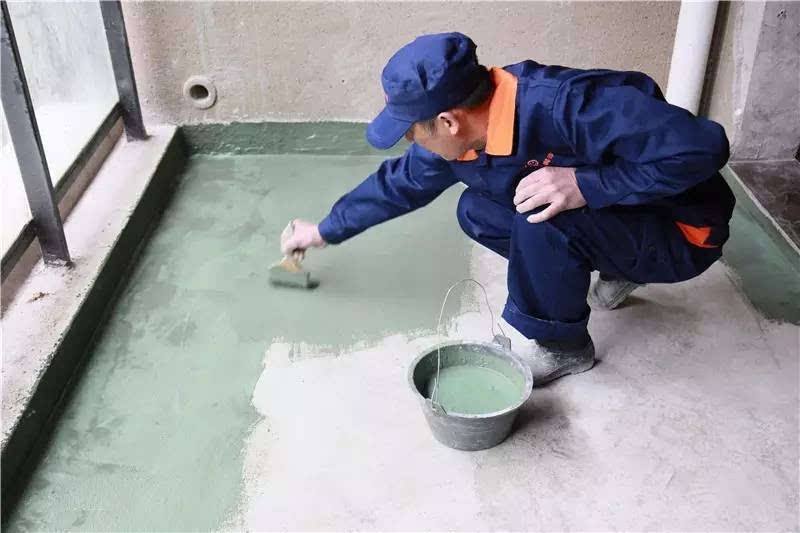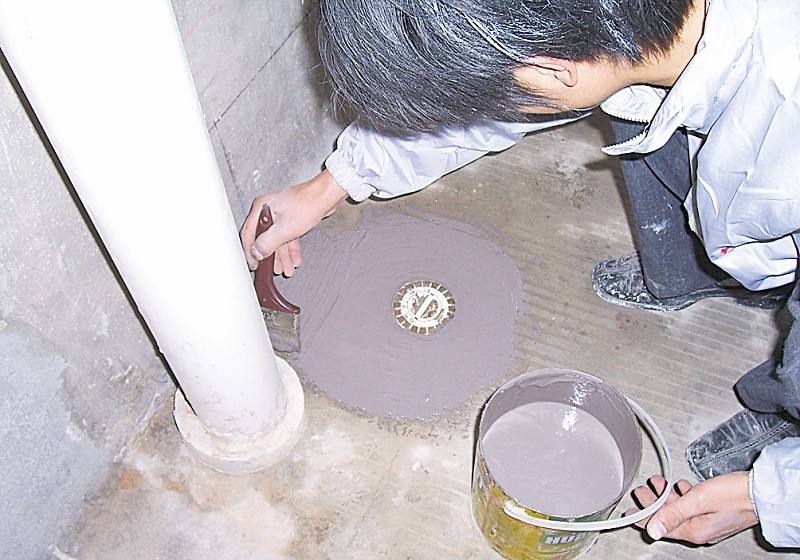I believe most people know that the bathroom needs to be waterproof. It is to avoid leakage, so it must be done well. However, most people do not understand that waterproofing of bathroom is divided into waterproof on the ground and waterproof on the wall, and their height and thickness are different. So what is the height of bathroom waterproofing ? How about it? Let's see.

Waterproof bathroom to do more than thick
1. How high is the bathroom waterproof
Most people don't know that there are two kinds of waterproof for the bathroom, waterproof for the floor and waterproof for the walls. Their heights are different. The toilet floor in most areas is waterproof. It will only reach the position 30 centimeters above the ground.
The shower area in the bathroom will be waterproof, and the general rule is 1.8m. The main reason is that the bathroom showers and sprinklers are mostly installed at a height of about 1.8m. It is designed according to the height of adults. If the waterproof of the shower is not sufficiently high, the wall is very long after spraying. It is easy to infiltrate the walls, resulting in moldy walls, and even lose the waterproof effect, so the bathroom shower area must not be lower than this height.

If it is a non-shower area, the bathroom wall waterproofing principle can be done in 1.5m, but most people will achieve 1.8m in order to strengthen the waterproof effect. The distance between the two will not be too different, and the same The construction is more convenient and the effect is more insurance.
If the wall on one side of the bathroom is shared with the bedroom, then the waterproofing of the wall is best done at full height, that is, the entire wall is made waterproof, so that it is less likely to affect the bedroom.

2 bathroom waterproof do thick
After knowing how high the bathroom's waterproof is , it cannot ignore its thickness. After all, the water consumption of the bathroom is very large. If the waterproof work is not done well, the follow-up will be even more troublesome. When the waterproof layer is used as a waterproof layer, it will be first made of sand and cement-mixed material to form a slope layer, that is, a waterproof base layer. The ground needs a certain slope, and the slope will drain to the surface and the ground water will flow away.
The thinnest part of the slope is at least 20mm thick from the ground, and the thickest part is about 30mm thick. Finally, the cement mortar is evenly applied. The joints around the tile and the wall should be waterproof, and the waterproof layer between the floor and the wall must be between 25-35cm.

Bathroom to do waterproof to pay attention to what
Basement treatment
When the bathroom is waterproof, the basement layer must be cleaned, so that the adhesion of the cement mortar will be good; if you knock off the original floor, the basement layer will be uneven, but also need to level, we must first play from the cement rough embryo At the end, do a good job of draining the water, then dry the cement and put it on the waterproof layer.
2. Application of waterproof material
When applying a waterproof layer, be sure to pay attention to "thin coating multi-layered," which means that a uniform smear layer, it is necessary to paint brushing several times, because the thin coating is easier to dry, so that it can form a protective film to waterproof, and Each time the direction of smearing is adjusted, cross coating and cross coating are performed, that is, cross brushing. In the floor drain, casing, sanitary ware root, Yin Yang angle and other places can be enhanced brushing.

Editor's Note: The above is about bathroom waterproofing and how to do it, and what you should pay attention to when it comes to waterproofing. I hope the contents of Xiaobian can help everyone. For more information, please pay attention to this site.
Tile paving is a major event in wall and floor finishes, but because of its construction often means that the dust of the decoration space, so this part of the headache for many people. So in the end is the tile glue or grout it? Next, let's take a look.
1, cement sand; cement mortar, mortar composed of cement, fine aggregate and water, and lime, reactive admixture or admixture added on site into cement mortar and cement mortar, which are traditional ceramic tiles The main method of paving is accepted and used by most people. However, when using cement mortar tile laying will encounter many problems, such as dust flying, poor construction environment; tile paste is not strong, there will be shedding and hollowing phenomenon.
And due to the weight of the cement is large, it is difficult to pave the walls of large-size ceramic tile compact, which has become a big problem brick wall construction. However, if you do not use cement mortar, but the use of Ceramic Tile Adhesive to pave the way, then the paving work will become like?
2, if the shop tiles with cement mortar tile, then the construction steps are wet wall, throw brick, support, etc., the effect is low, and the effect will not be too good, it is easy to produce hollowing out the tile, etc.; Tile adhesive tiles, then do not pre-foam tiles, do not wet the wall, the technical requirements of workers is not high,
Paste speed is 4-6 times the cement, brick joints will not have excess slurry, brick surface is not dirty, you can also put more than one tile, than the single-piece of cement mortar to paste too much.
3, Tile Adhesive Grout (with strong adhesion and resistance to falling ability, the requirements of the Ceramic Tile Wall Adhesive wall and non-cementing mortar to play the paste, such as wood), heavy brick tile adhesive (adhesive, flexibility Wall, to resist the stress caused by thermal expansion and contraction bonding layer, with gypsum board, fibreboard and a larger size of various stone plate paste), points in great detail.
4, save space; use tile glue, just apply a thin layer, can well save space, and the use of cement mortar will need to lay a thick layer, although only a few millimeters or centimeters of the gap, but it overall On the occupation of the larger space, easy to make a small area of ?? the shop when the pavement is completed more narrow.
Although the tile adhesive has many advantages, but there are some small details in the use of Best Ceramic Tile Adhesive should also pay attention to:
5, the two materials are shrinking during the bonding process is the same, so the surface of the tile flatness is high, because it is filled with paste, there will be no fasting, fall off these conditions appear posted naturally look better.
6, on the whole, tile adhesive & grout is the inheritance of the advantages of traditional cement mortar, optimize and save resources of the modern way of laying.
In addition, there is also a method of mixing tile cement with cement mortar, which is called tile cement additive. The additive to improve the bond strength, flexibility and water resistance of cement sand can be used as an interface treatment agent and tile adhesive strength enhancer for swimming pools, home kitchen cabinets and other indoor wet places. The product if mixed with strong tile glue can be used directly for the old wall paste ceramic tile.
Tile Adhesive Grout
Ceramic Tile Adhesive,Best Ceramic Tile Adhesive,Ceramic Tile Wall Adhesive,Tile Adhesive Grout
UMS New Materials Industry Co.,LTD , https://www.ums-factory.com